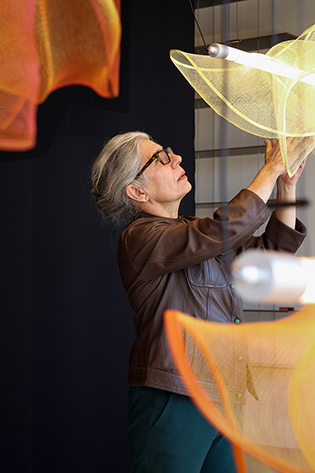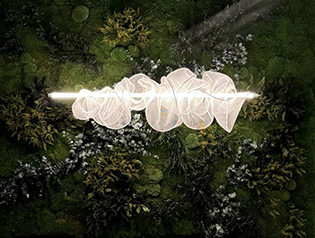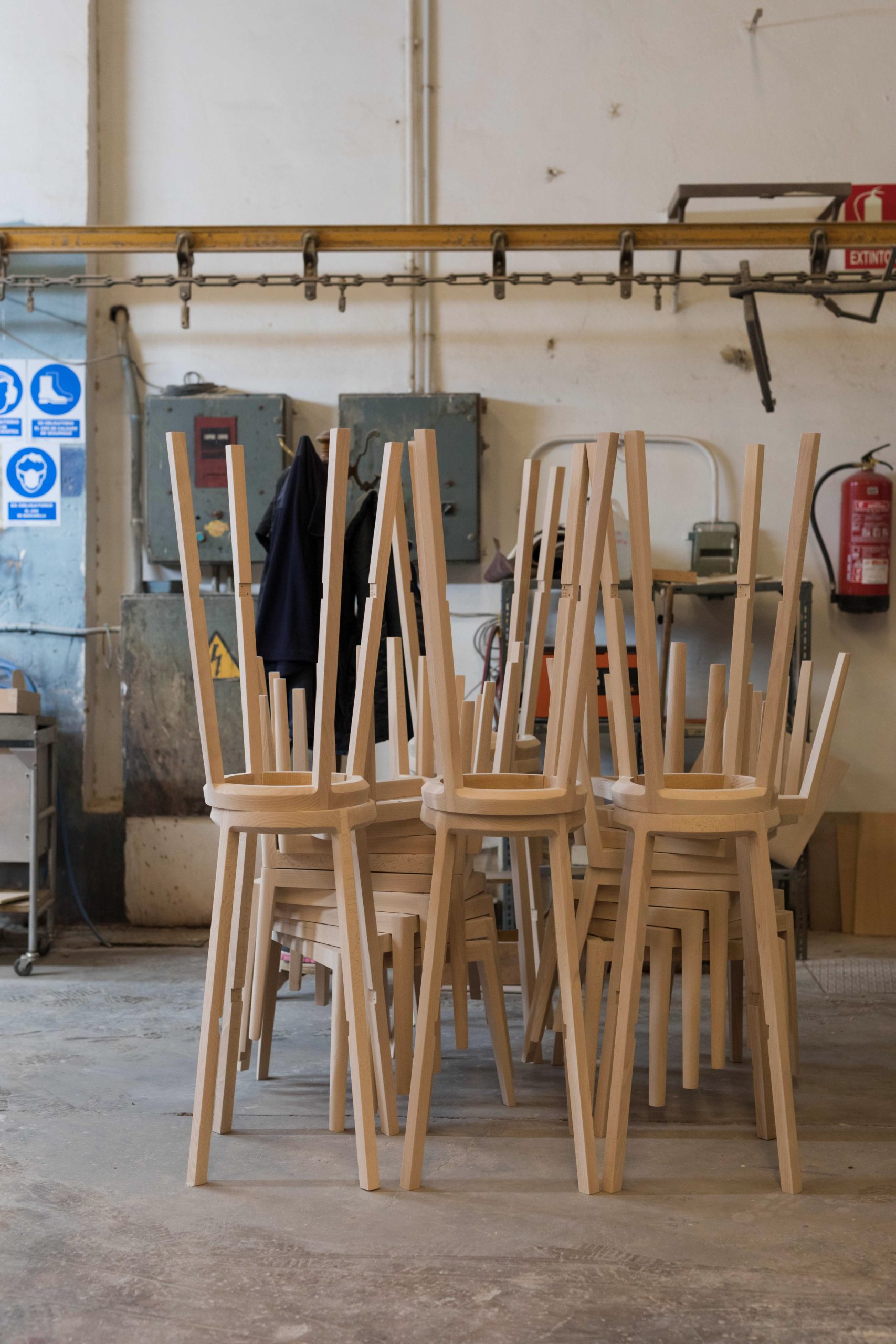Anna Castelli Ferrieri (1918–2006) was both an Italian architect and industrial designer. She studied architecture at the influential Politecnico di Milano, where her tutor was Franco Albini, an Italian Neo-Rationalist architect and designer (Neo-Rationalism was a minimalist aesthetic movement that emphasised a building’s practicality and functionality, eschewing ornamentation). Anna graduated from the Politecnico di Milano in 1943, the first woman to do so. It was there that she was introduced to the ideas of the Bauhaus—its avant-garde theories and practice, coupled with Italian Neo-Rationalist design principles, would help shape her future work. Anna’s father, Enzo Ferrieri, was an Italian director, journalist and screenwriter, whose literary contemporaries, including novelists James Joyce and Thomas Mann, were part of a cultural circle that influenced her creative thinking.

Anna Castelli Ferrieri. Photo © Kartell.
Anna Castelli Ferrieri belonged to a new generation of Italian architects and designers interested in the possibilities presented by novel materials and technologies. She set up her own architectural practice in 1946 and later, in 1949, founded Kartell along with her husband, Giulio Castelli. Continuing to work with her own practice, Anna would not design her first product for Kartell until 1964—it was a dining table for the residence attached to the Hotel Gritti Palace in Venice. Between 1959 and 1973, Anna worked with Italian architect Ignazio Gardella, during which time she designed two of her most noteworthy projects: Kartell’s factory and headquarters in Noviglio, on the outskirts of Milan (in 1966), and Alfa Romeo’s technical offices in Arese, also near Milan (in 1969). She worked on various historic restoration projects in Milan and Florence, and on urban planning initiatives in a number of Italian cities.

Anna Castelli Ferrieri’s first design for Kartell was a round dining table. The table was made of polyester resin and reinforced with glass fibre. Photo via Core77.

The Kartell factory. Photo © Kartell.

Alfa Romeo’s technical offices. Photo © FCA.
Today, Kartell is an internationally renowned maker of contemporary plastic furniture, objects and lighting, and a global symbol of Italian design. The mere fact Kartell is celebrating its 70th anniversary this year, is testament to its success. Indeed, Kartell can be credited with bringing innovative, aesthetic plastic design into the mainstream. One of the company’s most lauded products is the Componibili Storage Unit, designed by Anna Castelli Ferrieri. She designed two versions: ‘square’ in 1967 and ‘round’ in 1969. In constant production since its release and a Kartell bestseller, the flexible and functional Componibili is a modern classic.

Round and square versions of the Componibili Storage Unit.

A 1969 advertising campaign for the round Componibili Storage Unit. Photo © Kartell.
Stackable and modular, the Componibili Storage Unit is available in varying sizes and colours, with or without wheels. Made from ABS, it is truly versatile, fun and friendly, lending a helping hand in rooms across the home. An icon of industrial design, the Componibili has a place in both the Museum of Modern Art in New York and at the Centre Pompidou in Paris.

Anna Castelli Ferrieri standing by a small window display of the Componibili Storage Unit, at the Museum of Modern Art bookstore. Photo via Igloo.
In keeping with the Componibili Storage Unit and many of her other projects, Anna Castelli Ferrieri opined: ‘I always wonder if I am faithful to my goal, which is to somehow improve the quality of life, not to betray the ethical quality of my work.’ For Anna, it was her intention that everyday objects should be functional and well-designed. She was Kartell’s art director between 1976 and 1987, helping to forge the company’s unique identity—furniture and product designs were typically geometric in shape, colourful and glossy. Anna was a proponent of Kartell’s use of plastic as a viable design material: one that was accessible, modern and even glamourous. She experimented with a number of designs, creating the stool-table 4810 (a tribute to Alvar Aalto’s Stool 60), and the Memphis-inspired lounge chair 4814.

The stool-table 4810. Photo via Core77.

The lounge chair 4814. Photo via Core77.
For better or for worse, plastic played a key role in the story of 20th century design, and continues to influence and shape today’s design narrative. Kartell, Giulio Castelli and Anna Castelli Ferrieri, are very much a part of that narrative: their focus on plastic has, arguably, been for the betterment of design. Plastic is highly durable, long-lasting and malleable, and has been used in the making of many mid-century and modern-day design icons. Anna Castelli Ferrieri’s Componibili Storage Unit is just one remarkable example of plastic’s possibilities.

Kartell’s design team at the 11th Salone del Mobile in Milan, 1969. From left: Olaf von Bohr, Gino Colombini, Alberto Rosselli, Ignazio Gardella, Joe Colombo, Anna Castelli Ferrieri and Giotto Stoppino. Photo by Ugo Mulas © Kartell.
Giulio Castelli and Anna Castelli Ferrieri sold Kartell to their son-in-law, Claudio Luti, in 1988 (he remains president and CEO). Both Anna and Giulio lived long enough to witness Kartell’s exponential growth and its impact on a new generation of designers and aficionados. Today, Anna should be remembered as an innovator and someone whose goal was to make life that bit better through design.
Bibliography
Testoni, P. (2017). Chi è Anna Castelli Ferrieri, l’architetto a cui Milano dedica una galleria a City Life. [online] ELLE Decor. Available at: https://www.elledecor.com/it/people/a21561393/city-life-milano-galleria-anna-castelli-ferrieri/ [Accessed 29 Aug. 2019].
Veit, R. (2015). Anna Castelli Ferrieri’s Plastic Fantastic – Core77. [online] Core77. Available at: https://www.core77.com/posts/42547/Anna-Castelli-Ferrieris-Plastic-Fantastic [Accessed 29 Aug. 2019].













